Film 2009-10: Boo for Hollywood | reviews, news & interviews
Film 2009-10: Boo for Hollywood
Film 2009-10: Boo for Hollywood
The cinematic peaks and troughs of 2009, and the heights to scale in 2010
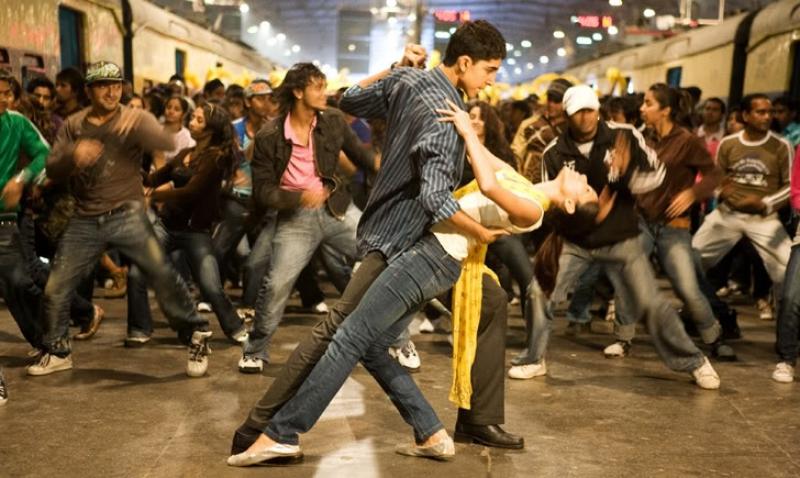
In 2009 Hollywood sank deeper into the trough that it has busily been colonising over the last decade.
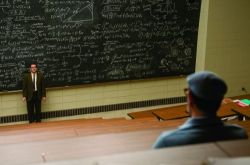 Which is not to say that individual American directors weren't producing extremely interesting work. The Coen brothers made one of the most personal, original and bleakest films of their careers in the shape of A Serious Man, pictured left (and have been rewarded for their pains by being virtually shut out of the end-of-year awards jamboree). Steven Soderbergh had new four features released in the UK, his Che Guevara diptych, The Informant! and The Girlfriend Experience, all fascinating and provocative in their very different ways.
Which is not to say that individual American directors weren't producing extremely interesting work. The Coen brothers made one of the most personal, original and bleakest films of their careers in the shape of A Serious Man, pictured left (and have been rewarded for their pains by being virtually shut out of the end-of-year awards jamboree). Steven Soderbergh had new four features released in the UK, his Che Guevara diptych, The Informant! and The Girlfriend Experience, all fascinating and provocative in their very different ways.
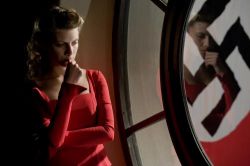 Other directors, having come a cropper with overweeningly ambitious works, reinvented themselves triumphantly. Darren Aronowsky's touching, grungily humorousThe Wrestler gave Mickey Rourke his best role in years and an Academy Award nomination. Francis Coppola continued to explore a low-budget, semi-experimental aesthetic with the mysterious and brooding Tetro, a lo-fi version of The Godfather which, lamentably, has yet to be released in Britain. Quentin Tarantino's revisionist World War Two dramedy Inglourious Basterds, just out on DVD and pictured above, contained some stupendous setpieces and performances: Christoph Waltz, playing a silkily sadistic Nazi is a dead cert for the Oscar shortlist.
Other directors, having come a cropper with overweeningly ambitious works, reinvented themselves triumphantly. Darren Aronowsky's touching, grungily humorousThe Wrestler gave Mickey Rourke his best role in years and an Academy Award nomination. Francis Coppola continued to explore a low-budget, semi-experimental aesthetic with the mysterious and brooding Tetro, a lo-fi version of The Godfather which, lamentably, has yet to be released in Britain. Quentin Tarantino's revisionist World War Two dramedy Inglourious Basterds, just out on DVD and pictured above, contained some stupendous setpieces and performances: Christoph Waltz, playing a silkily sadistic Nazi is a dead cert for the Oscar shortlist.
 It has also been an incredible banner year for animation. 3D is the fashion du jour (though, to my mind, it's still unclear whether this is, as some have been claiming, the future of cinema). But the genre has blossomed in all its guises, usually blending several processes at once: model animation (Coraline, Fantastic Mr Fox) , CGI (Monsters vs Aliens, 9, Cloudy With a Chance of Meatballs, Up), huge puppets (Spike Jonze's Where the Wild Things Are) and traditional hand-drawn cels: Hayao Miyazaki's new film Ponyo, pictured left, is waiting in the wings as one of the early highlights of 2010, as is The Princess and the Frog, with which even Disney returns to the cel animation it once abandoned. The soulless motion capture approach continued too this year, with Robert Zemeckis' A Christmas Carol. Few counted that one as a triumph, though James Cameron's Avatar was a more auspicious, well, avatar of the technique.
It has also been an incredible banner year for animation. 3D is the fashion du jour (though, to my mind, it's still unclear whether this is, as some have been claiming, the future of cinema). But the genre has blossomed in all its guises, usually blending several processes at once: model animation (Coraline, Fantastic Mr Fox) , CGI (Monsters vs Aliens, 9, Cloudy With a Chance of Meatballs, Up), huge puppets (Spike Jonze's Where the Wild Things Are) and traditional hand-drawn cels: Hayao Miyazaki's new film Ponyo, pictured left, is waiting in the wings as one of the early highlights of 2010, as is The Princess and the Frog, with which even Disney returns to the cel animation it once abandoned. The soulless motion capture approach continued too this year, with Robert Zemeckis' A Christmas Carol. Few counted that one as a triumph, though James Cameron's Avatar was a more auspicious, well, avatar of the technique.
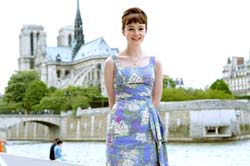 It was tremendously good to see a spread of world-class work from female directors: among the films that can hold their own in a "year's best" pantheon without a trace of special pleading are Claire Denis' 35 Shots of Rum, Andrea Arnold's Fish Tank and Jane Campion's Bright Star, while Kathryn Bigelow's remarkable men-at-war thriller The Hurt Locker, just released on DVD, is dominating the American end-of-year awards season and looks unstoppably Oscar-bound. There has also been some very fine work from women in the American low-budget sector, including Lynn Shelton's Humpday and Kelly Reichardt's grittily exquisite Wendy and Lucy, and in Britain Lone Scherfig's An Education, pictured above right, and Sam Taylor Wood's Nowhere Boy are creditable (if a little workwomanlike) examples of commercial narrative cinema.
It was tremendously good to see a spread of world-class work from female directors: among the films that can hold their own in a "year's best" pantheon without a trace of special pleading are Claire Denis' 35 Shots of Rum, Andrea Arnold's Fish Tank and Jane Campion's Bright Star, while Kathryn Bigelow's remarkable men-at-war thriller The Hurt Locker, just released on DVD, is dominating the American end-of-year awards season and looks unstoppably Oscar-bound. There has also been some very fine work from women in the American low-budget sector, including Lynn Shelton's Humpday and Kelly Reichardt's grittily exquisite Wendy and Lucy, and in Britain Lone Scherfig's An Education, pictured above right, and Sam Taylor Wood's Nowhere Boy are creditable (if a little workwomanlike) examples of commercial narrative cinema.
Less edifyingly, the commercial American cinema still remains virtually closed to female directing talent. Apart from Bigelow, and a handful of women working in the safe rom-com arena, it continues cheerily to propose overwhelmingly negative and patronising images of women, no matter that they have been asserting themselves as an increasingly significant sector of the film-going demographic.
 The documentary boom of the Noughties, spearheaded by Michael Moore and encompassing such diverse and trenchant fare as Man on Wire, Supersize Me, Enron and An Inconvenient Truth, lost a degree of momentum, though such events as the Sheffield Doc/Fest indicate that reports of its death are greatly exaggerated. The September Issue and This Is It did sterling business and smaller films like Burma VJ (pictured left), a chronicle of the guerrilla film-makers secretly recording the excesses of one of the world's most oppressive regimes, shone out as beacons of an extraordinary courage and determination.
The documentary boom of the Noughties, spearheaded by Michael Moore and encompassing such diverse and trenchant fare as Man on Wire, Supersize Me, Enron and An Inconvenient Truth, lost a degree of momentum, though such events as the Sheffield Doc/Fest indicate that reports of its death are greatly exaggerated. The September Issue and This Is It did sterling business and smaller films like Burma VJ (pictured left), a chronicle of the guerrilla film-makers secretly recording the excesses of one of the world's most oppressive regimes, shone out as beacons of an extraordinary courage and determination.
Slumdog Millionaire did not, as was widely predicted at the beginning of this year, usher in a revival of subcontinental cinema, with the honourable part-exception of the British/Sri Lankan comedy Machan. No single national film movement held sway, though we continued to watch movies from France, such as A Christmas Tale, The Class, Coco Before Chanel and Mesrine, the minor Italian renaissance continued with Il Divo and Mid-August Lunch, and there was a steady stream of interesting work from Latin America, especially Mexico, and the Far East, in particular South Korea.
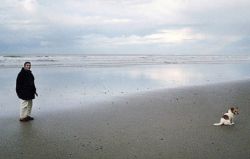 Though as eagerly bruited, a UK cinema boom did not come snapping at the heels of Slumdog. To my mind, the most exciting work was to be found on the far outer fringes of British film culture: Gideon Koppel's Sleep Furiously (picture right), a poetic essay-film in the noble tradition pioneered by Chris Marker, Patrick Keiller and, latterly Terence Davies; Eran Creevy's Shifty, one of the first, promising fruits of the "Microwave" ultra-low-budget movement; and Joe Lawlor and Christine Molloy's Helen, which applied an elegant European arthouse aesthetic to a intimate and very provincial British subject.
Though as eagerly bruited, a UK cinema boom did not come snapping at the heels of Slumdog. To my mind, the most exciting work was to be found on the far outer fringes of British film culture: Gideon Koppel's Sleep Furiously (picture right), a poetic essay-film in the noble tradition pioneered by Chris Marker, Patrick Keiller and, latterly Terence Davies; Eran Creevy's Shifty, one of the first, promising fruits of the "Microwave" ultra-low-budget movement; and Joe Lawlor and Christine Molloy's Helen, which applied an elegant European arthouse aesthetic to a intimate and very provincial British subject.
The continuing decline in DVD sales (though partly offset by a boom in Blu-Ray) found producers looking for alternative ways of making money from their work via the simultaneous multi-platform distribution of films such as Sally Potter's Rage or Jonathan Couette's All Tomorrow's Parties, and directors seeking new ways, primarily via online distribution, of getting it seen via such P2P sites as stealthisfilm. Sadly, the two objectives didn't always coincide.

Going forward, one of the must-see films of early 2010 is Jacques Audiard's exhilarating prison drama A Prophet (pictured left), which won the hotly contested Best Film award at the London Film Festival this autumn after bagging the Grand Prix in Cannes: watch out here next month for an illustrated Audiard masterclass on directing some of the most thrilling sequences. Of the Oscar front-runners, Lee Daniels' ghetto drama Precious and the acidic satire Up in the Air, starring George Clooney as a charming commitmentphobe, also open here in January.
 Martin Scorsese's Shutter Island and Roman Polanski's The Ghost Writer, adapted from the novel by Robert Harris, have both been announced for the Berlin Film Festival in February, when Clint Eastwood's Nelson Mandela movie Invictus opens in the UK. Later in the spring, Tim Burton has a new Alice in Wonderland, pictured above (which, sharp-eyed readers may have noticed, supplies the wallpaper for the film area of this site) while Oliver Stone's Wall Street 2 has Gordon ("Greed is good") Gekko, played again by Michael Douglas, confronting the economic crash of 2008.
Martin Scorsese's Shutter Island and Roman Polanski's The Ghost Writer, adapted from the novel by Robert Harris, have both been announced for the Berlin Film Festival in February, when Clint Eastwood's Nelson Mandela movie Invictus opens in the UK. Later in the spring, Tim Burton has a new Alice in Wonderland, pictured above (which, sharp-eyed readers may have noticed, supplies the wallpaper for the film area of this site) while Oliver Stone's Wall Street 2 has Gordon ("Greed is good") Gekko, played again by Michael Douglas, confronting the economic crash of 2008.
The future of Arts Journalism
You can stop theartsdesk.com closing!
We urgently need financing to survive. Our fundraising drive has thus far raised £49,000 but we need to reach £100,000 or we will be forced to close. Please contribute here: https://gofund.me/c3f6033d
And if you can forward this information to anyone who might assist, we’d be grateful.

Subscribe to theartsdesk.com
Thank you for continuing to read our work on theartsdesk.com. For unlimited access to every article in its entirety, including our archive of more than 15,000 pieces, we're asking for £5 per month or £40 per year. We feel it's a very good deal, and hope you do too.
To take a subscription now simply click here.
And if you're looking for that extra gift for a friend or family member, why not treat them to a theartsdesk.com gift subscription?
more Film
 London Film Festival 2025 - crime, punishment, pop stars and shrinks
Daniel Craig investigates, Jodie Foster speaks French and Colin Farrell has a gambling habit
London Film Festival 2025 - crime, punishment, pop stars and shrinks
Daniel Craig investigates, Jodie Foster speaks French and Colin Farrell has a gambling habit
 I Swear review - taking stock of Tourette's
A sharp and moving tale of cuss-words and tics
I Swear review - taking stock of Tourette's
A sharp and moving tale of cuss-words and tics
 A House of Dynamite review - the final countdown
Kathryn Bigelow's cautionary tale sets the nuclear clock ticking again
A House of Dynamite review - the final countdown
Kathryn Bigelow's cautionary tale sets the nuclear clock ticking again
 theartsdesk Q&A: Idris Elba on playing a US President faced with a missile crisis in 'A House of Dynamite'
The star talks about Presidential decision-making when millions of lives are imperilled
theartsdesk Q&A: Idris Elba on playing a US President faced with a missile crisis in 'A House of Dynamite'
The star talks about Presidential decision-making when millions of lives are imperilled
 Urchin review - superb homeless drama
Frank Dillane gives a star-making turn in Harris Dickinson’s impressive directorial debut
Urchin review - superb homeless drama
Frank Dillane gives a star-making turn in Harris Dickinson’s impressive directorial debut
 Mr Blake at Your Service review - John Malkovich in unlikely role as an English butler
Weird comedy directed by novelist Gilles Legardinier
Mr Blake at Your Service review - John Malkovich in unlikely role as an English butler
Weird comedy directed by novelist Gilles Legardinier
 Don't Let's Go to the Dogs Tonight review - vivid adaptation of a memoir about a Rhodesian childhood
Embeth Davidtz delivers an impressive directing debut and an exceptional child star
Don't Let's Go to the Dogs Tonight review - vivid adaptation of a memoir about a Rhodesian childhood
Embeth Davidtz delivers an impressive directing debut and an exceptional child star
 One Battle After Another review - Paul Thomas Anderson satirises America's culture wars
Leonardo DiCaprio, Teyana Taylor, and Sean Penn star in a rollercoasting political thriller
One Battle After Another review - Paul Thomas Anderson satirises America's culture wars
Leonardo DiCaprio, Teyana Taylor, and Sean Penn star in a rollercoasting political thriller
 Steve review - educator in crisis
Cillian Murphy excels as a troubled headmaster working with delinquent boys
Steve review - educator in crisis
Cillian Murphy excels as a troubled headmaster working with delinquent boys
 Can I get a Witness? review - time to die before you get old
Ann Marie Fleming directs Sandra Oh in dystopian fantasy that fails to ignite
Can I get a Witness? review - time to die before you get old
Ann Marie Fleming directs Sandra Oh in dystopian fantasy that fails to ignite
 Happyend review - the kids are never alright
In this futuristic blackboard jungle everything is a bit too manicured
Happyend review - the kids are never alright
In this futuristic blackboard jungle everything is a bit too manicured

Add comment